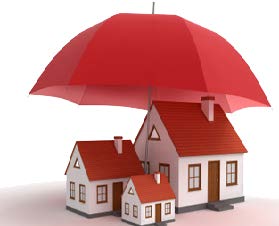If your premiums spiked recently, you may be scratching your head wondering why. There are several factors that can cause an increase in your premiums. Here are five reasons that explain why your premiums may have increased.
- The Age Of Your Home – When your house and the systems in it start to get old, it costs more to insure your house because as anything ages, it becomes more susceptible to damage. Roofs can get leaky, foundations can shift and crack, and delicate systems like air conditioning, electrical and plumbing become worn-out and more difficult to maintain.There’s no real consensus on how old a house has to be for the insurance on it to go up. It goes up because an old house is a riskier house to cover. Old and frazzled electrical or heating systems could cause fires. Old plumbing starts to leak and cause water damage. Roofing gets old and can get torn off by the wind. All these combine to form a larger number on your bill.
- Your credit may have changed – While a risky house makes for high premiums, so can risky people. If your credit dips due to missing payments on things, it could become harder to pay for home insurance. Note, however, that insurance companies have access to your credit report only in certain states.
- Pets – Certain breeds of dog, along with “exotic” undomesticated pets, can cause your premiums to go up because they increase your liability rates. This is because your insurance company is the one that pays in the event your pet harms someone. Exotic pets, including creatures like tigers, monkeys and bears, are an even greater risk because they are undomesticated and much more likely to attack someone (even an intruder).
- Home additions – There are two ways a home addition could increase the cost of your insurance. One is by increasing the total square footage of your home. Because home insurance is typically designed to rebuild your home if something happens that destroys it, adding a room or two will make it more expensive to rebuild and thus more expensive to fully insure.The second sort of home addition is adding something like a trampoline or a pool (so-called attractive nuisances), since these increase the cost of potential liability payments in a similar way as certain breeds of dog or other animals do — if someone gets hurt, even if the person is trespassing on your property, he or she can sue you, which means that your insurance might have to pay the cost, and anything that the insurance company thinks it has to pay for means that your premiums are going up.
- Local environment and building costs – Your premium can also go up based on things entirely outside your control, such as building costs in your area changing and climate fluctuating. If your area becomes more susceptible to heavy storms, flooding, tornados or any other destructive weather in the latest environmental trends, your premium could go up.
What can you do about the increases?
Some price increases are out of your control and others are due to additions you’ve been dreaming of for years. However, you can do something about a larger premium:
- Shop your coverage at least annually. Providers vary widely in how they evaluate risk, so you could get a better deal elsewhere.
- Ask about discounts. One common discount that could save you up to 20 percent on premiums is purchasing your home and auto coverage from the save provider.
- Increase your deductible. Your deductible — the amount you agree to pay out of pocket toward a claim — has an inverse relationship with your premium. The higher your deductible, the lower your premium. However, you must be careful to keep the deductible at an amount you can afford to pay should it be necessary.
